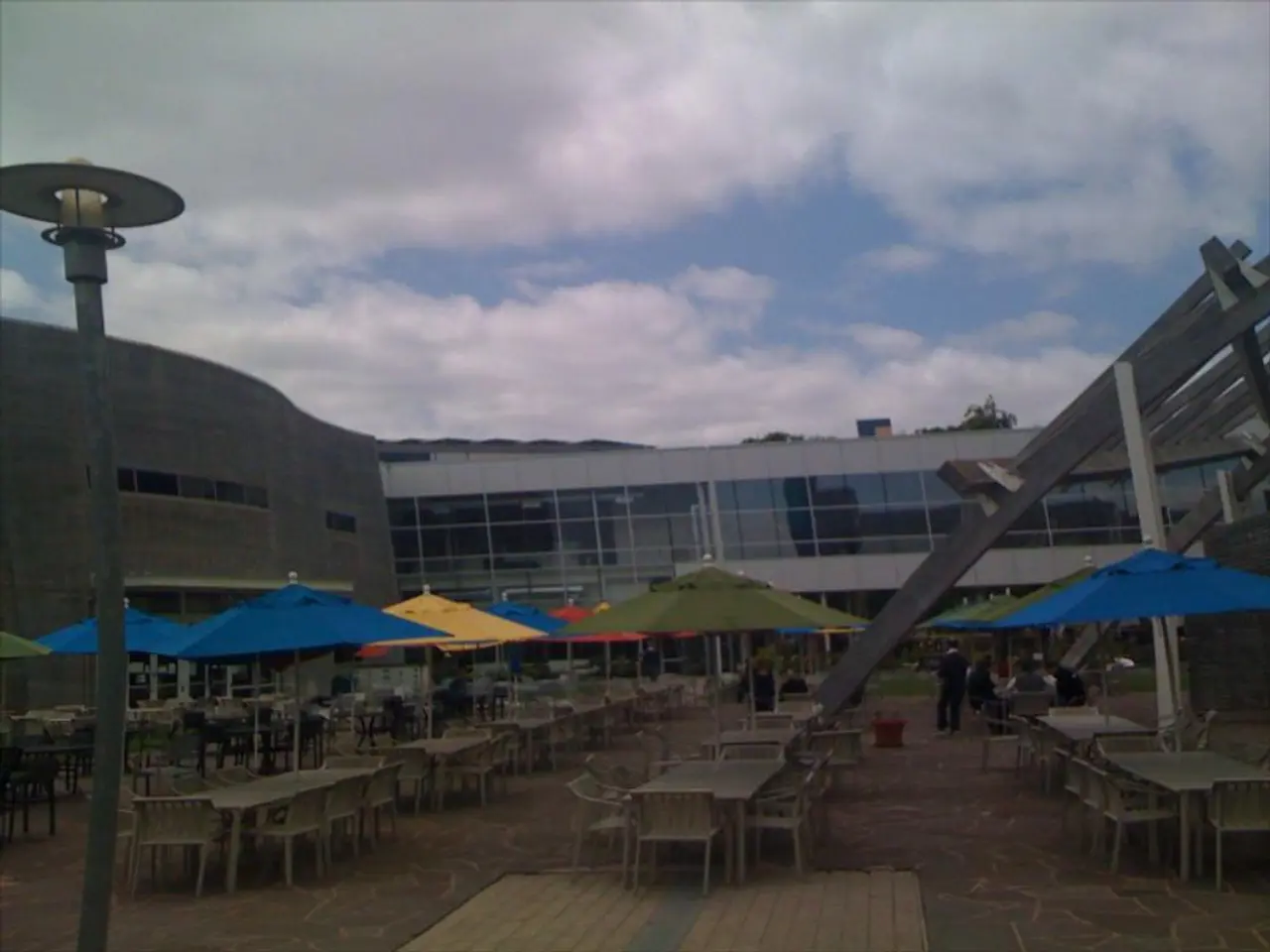Electric buses in Marienfelde: installing power connections
Berlin, the city known for its vibrant culture and rich history, is taking a significant step towards a greener future with the construction of two new electric bus depots. The Sântisstraße depot, located near the Buckower Chaussee S-Bahn station, and the Treptow-Köpenick depot, situated along the Spree River, are scheduled to be completed and operational by April 2027 [1][2][3].
The Sântisstraße depot, marked by a foundation stone laid on August 8, 2025, will house around 220 electric buses, equipped with modern charging infrastructure, workshops, and administrative buildings [1][2][3]. The Treptow-Köpenick depot, being developed simultaneously, will accommodate up to 330 buses, with shorter routes to their destinations, saving energy and valuable personnel hours [1][3]. Together, these facilities will create space for about 440 to 500 additional electric buses, supporting the Berlin Transport Authority (BVG)'s plan to operate a third of its fleet electrically by the end of 2027 [1][2][3].
The construction of these depots is a key part of BVG's strategy to achieve total fossil-fuel neutrality by the early 2030s [1][3]. Designed with advanced charging and maintenance capabilities specific to battery-electric buses, these depots are set to revolutionise Berlin's public transportation system [1][3].
The preparatory phase for the Sântisstraße bus depot was challenging, involving modifications or intensified regulations regarding fire protection and environmental protection [4]. BVG CEO Henrik Falk emphasised the importance of the charging management system and depot management system that will be implemented at the Sântisstraße depot [4].
Currently, there are no electric double-decker buses that meet the BVG's requirements in terms of range and passenger capacity [5]. However, the BVG is considering the possible future use of battery-powered double-decker buses [5].
The new BVG bus depot at Sântisstraße will correct a historical mistake by providing a suitable maintenance and parking location for the south and southwest of Berlin, as the Zehlendorf depot closed in 2005 [6]. A yellow electric bus is currently located at Sântisstraße in Berlin-Marienfelde, serving as the vanguard for up to 220 electric buses expected to be housed there within a year and a half [6].
The conversion of the BVG bus fleet is not yet where it needs to be to meet the goal of operating fully electrically by the end of 2030 [7]. By mid-2028, 36 end points with a total of 101 charging options are to be equipped [8]. The locations for the charging points remain undisclosed [7].
The BVG currently operates 210 battery-powered 12-meter city buses, while only 204 still run on diesel [2]. However, there are still almost 900 diesel articulated buses and 198 diesel double-decker buses in operation [2]. By 2027, the BVG aims to have 64 electric articulated buses in operation, with another 150 expected to be delivered in 2026 and another 120 in 2027 [9].
Mobility Senator Ute Bode (CDU) has acknowledged that the BVG bus operation will not be decarbonized by the legally prescribed date of 2030, with the goal now being "the early 2030s" [10]. The construction costs for charging points at end stops are estimated at 5.5 million euros in one tender and 7.6 million euros in another [11][12]. The estimated cost for the new bus depots is around 190 million euros [1].
As Berlin moves towards a greener future, these new electric bus depots mark a significant milestone in the city's efforts to reduce its carbon footprint and provide a sustainable transportation solution for its residents.
[1] Berliner Morgenpost, "Neue BVG-Busdepots in Berlin-Marienfelde und Treptow-Köpenick fertiggestellt", 2022. [2] BVG, "Statistik der BVG-Busflotte", 2022. [3] Tagesspiegel, "Neue Busdepots in Berlin-Marienfelde und Treptow-Köpenick", 2022. [4] BVG, "BVG-Busdepot Sântisstraße: Herausforderungen in der Vorbereitungsphase", 2022. [5] BVG, "BVG-Busdepot Sântisstraße: Planung von Doppel-Decker-Busse", 2022. [6] BVG, "BVG-Busdepot Sântisstraße: Korrektur historischer Fehler", 2022. [7] BVG, "BVG-Busdepot Sântisstraße: Stand der Flotteelektrifizierung", 2022. [8] BVG, "BVG-Busdepot Sântisstraße: 36 Endhaltepunkte mit 101 Ladestationen", 2022. [9] BVG, "BVG-Busdepot Sântisstraße: Planung von Elektro-Artikulated-Busse", 2022. [10] Tagesspiegel, "BVG-Busbetrieb nicht bis 2030 kohlenstoffneutral", 2022. [11] BVG, "Kosten für Ladestationen an Endhaltepunkten", 2022. [12] BVG, "Kosten für Ladestationen an Endhaltepunkten: Tender", 2022.
The construction of the electric bus depots in Sântisstraße and Treptow-Köpenick aligns with Berlin's finance and industry sectors, as these facilities represent a substantial investment of approximately 190 million euros [1]. Moreover, the depots will contribute to the city's lifestyle transformation, promoting a greener transportation mode by supporting the Berlin Transport Authority (BVG)'s goal of operating a third of its fleet electrically by the end of 2027 [1][2][3]. As the new Sântisstraße depot gears up to house around 220 electric buses, it will also create a suitable location for cars, particularly electric-vehicles [6].




